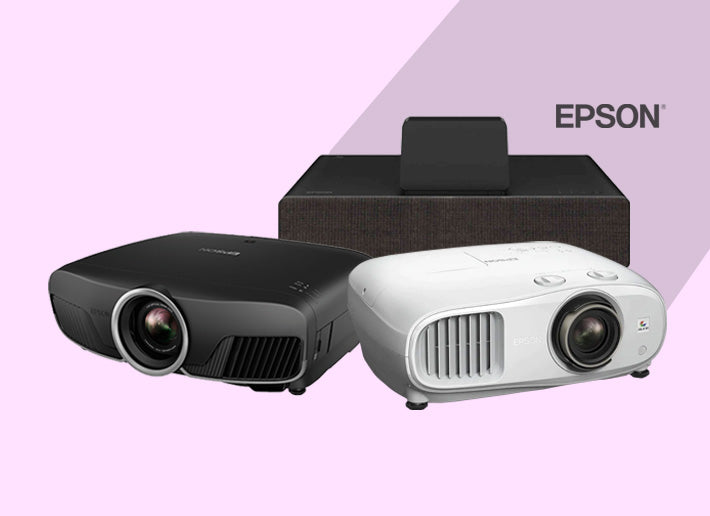
HDMI is the most common audio/video connection in use. However, TVs may have as few as one or two, or at most, three or four HDMI inputs. In a conventional home theatre setup, there are multiple inputs sources such as BluRay players, DVD players, cable/satellite box, NAS streaming servers, gaming consoles, and laptops etc. and usually one or two display devices such as a Television or Projector setup. When required, how do you switch and route signals between the various inputs and outputs? Sure, an AV receiver is the best option. However, let's assume you already have one or simply do not have the scope or budget to buy an AV receiver. What do you then? This is where an HDMI switcher steps up!
In this blog-cum-guide, we share everything you need to know about HDMI switchers for home theatre applications. Read more to learn.
Getting to know HDMI switchers
An HDMI switcher is a device that expands the number of HDMI sources you can connect to your TV or video projector. The number of HDMI inputs on a switcher may vary from 2 to 8. However, there are more models with higher input and output counts. You can connect the source(s) to the switcher's HDMI inputs and connect the switcher's HDMI output to the TV or video projector.
Some switchers have two HDMI outputs. This allows the connection of the same source to two video displays such as two TVs or a TV and video projector. You can even route separate sources to each of the video display. An HDMI switcher with this capability is usually referred to as a Matrix Switcher. HDMI switchers plug into AC power and usually come with a remote control for convenient source selection. Some HDMI switchers also incorporate HDMI-CEC support, which allows the switcher to automatically go to the correct input of the most recently activated device.
What features should an HDMI switcher have?
HDMI switchers currently available for consumers are at least 1080p and Dolby Digital/DTS compatible. If you have a 4K Ultra HD TV and 4K source components, the switcher also needs to be 4K compatible. If you need to pass HDR-encoded and/or 3D video signals, your HDMI switcher needs to have those capabilities. Mostly all HDMI switchers pass standard Dolby Digital and DTS Digital Surround audio signals, but if you are routing the output of the switcher through a home theatre receiver (instead going directly to the TV) that provides decoding for advanced audio formats, such as Dolby TrueHD, Atmos, DTS-HD Master Audio, DTS:X, you need to make sure that your HDMI switcher is compatible. The switcher also has to support HDMI handshake requirements that are implemented via either the HDCP (High-bandwidth Digital Copy Protection) or HDCP 2.2 for 4K devices protocol between source devices and the TV or video projector. This is crucial when switching between devices, as there is a temporary break in the handshake until the newly selected device locks in with a new handshake.
Another HDMI switcher option combines both wired and wireless connectivity. There are several that will accept two or more HDMI sources, but on the output side, may include both a physical HDMI output, as well as wireless transmission to one, or more wireless receivers than use an HDMI output to connect to a video display. This solution is one way to reduce HDMI cable clutter over a longer distance. However, just as with wired switchers, the wireless transmission feature needs to support the video and audio capabilities (resolution, formats) that you require.
A note on HDMI splitters
Don't need an HDMI switcher, but want to send the same HDMI signal to two TVs or a video projector and TV? If you don't need a switcher, you can use an HDMI splitter. HDMI splitters that send two, three, four, or more signals from a single HDMI source are available. However, for consumers, two is usually enough. Splitters with more outputs are mostly for business and commercial use where one source needs to be sent to multiple TVs or projectors.
Splitters can be powered or passive (no power needed). It is best to use powered splitters to avoid handshake or signal loss issues. The splitter also has to be compatible with the video and audio signals you may need to pass-through. Just as with a switcher, if one video display device is a lower resolution than the other, the output for both may default to the lower resolution.
If you have run out of HDMI inputs on your TV, adding an HDMI switcher can expand the number of devices you can access. Factors such as the number of inputs and outputs and the capability to pass the needed video and audio formats will determine which HDMI switcher is right for you.
While HDMI switchers and splitters are great, at Ooberpad, we would suggest opting for an AV receiver. They accept a wide variety of audio and video inputs and offer more control options.









